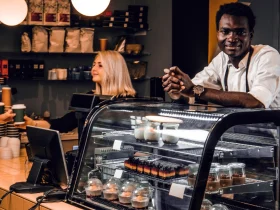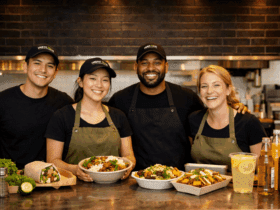Everyone knows that data is important for business. With reams and reams of data being generated every hour that a restaurant is open, many restaurateurs find the mere thought of going through these figures daunting. Complicating matters is the fact that dry data does not make much sense. In order for the information to be useful, it needs to be carefully organized, collated and analysed. This can take a lot of time. And if number crunching is not your scene, it can also become extremely tedious and boring.
This is where restaurant analytics comes in. Restaurant analytics compiles, combines, compares and coordinates the myriad details you get from your online store, apps and kiosks and presents them as actionable insights. Unlike simple restaurant reporting, which is a straightforward reading of metrics, restaurant analytics gives meaning to these figures. They shed light on the why’s and what’s of your restaurant opening the path for you to plan and strategize accurately and efficiently.
Here are five ways in which restaurant analytics can add value to your establishment:
01. Making the right changes to your menu
Your menu is the core of your restaurant. It is the nucleus that draws customers to you. While a menu can be hugely popular at one time, it may not always be in demand. To keep your cash counter ringing you need to regularly tweak your menu. It is not easy to decide on what changes you should be making. Your systems will provide you with all kinds of important data: most ordered dishes, repeat orders, special requests, customer feedback – there is a range of information you can accumulate about the food you sell. What restaurant analytics does is to correlate the varying kinds of data to each other showing you what is popular, when they are in demand, what kind of changes customers seek to specific menu items, and how the majority like their food prepared. This kind of evaluation gives you pragmatic feedback on which you can base your menu alterations.
02. Staying customer-centric and forging stronger bonds
Restaurant analytics give you an insight into your customers. You can profile your customers with the information you get and make the most suitable decisions that drive business. Even things like interior design and decor can be decided on based on customer demographics – an alluring appearance will bring in the right clientele and give you more sales. You can tweak your menu to match the tastes of your patrons. Specials and promotions will be a lot more successful because they are created with the customer in mind.
In addition to looking at group characteristics, restaurant analytics provide you with information on individual customers that can help you foster a closer bond with them. Make them feel special on their birthday by offering them a free drink or dessert. Personalize the ‘recommendations’ segment of your menu with items that they purchase regularly and they will be chuffed by the attention that they are getting. This kind of affirmation of the value of individual customers builds loyalty and seals their long-term patronage of your establishment.
03. Staying on top of inventory
Managing inventory is key to running a successful business. This involves much more than keeping an eye on stock quantities. You need to get a clear understanding of the most popular food categories, profit margins and revenue. With restaurant analytics you have easy access to this data and much more. Restaurant analytics compares inventory figures across months, revealing usage and purchase trends that can inform your own buying. You will also be prepared to meet seasonal demands by knowing what to get more of when. This also reduces wastage because you will be aware of what is needed at a specific time.
04. Evaluating staff performance
Restaurant analytics gives you objective data with which to assess staff performance. Tips, waiting times and customer feedback are just some of the ways in which you can accurately gauge how well each staff member is doing. Staff evaluation, promotions and incentivisation become a lot fairer when you have clear, unbiased figures on which to base your decisions. You can also take appropriate action with those employees who are underperforming, providing training, mentorship and even warnings. Knowing performance levels is invaluable in offering better customer service, as you can arrange your duty rosters so as to schedule your best, most efficient members of staff to work specific, vital shifts.
05. Growing your business with forecasts and trends
When planning we try to guess at how things will be in the upcoming month or year. Data-driven forecasts are reliable because they are based on previous sales patterns. Restaurant analytics can identify the best performing months of the year so that you can stock up on the necessary ingredients and roster more staff. You are also able to pick out the sluggish periods and come up with strategies to push sales.
With the information generated by restaurant analytics you can also spot emerging trends. Whether it is a new diet or a specific ingredient that is being sought, you can start working this into your menu. Responding to customer demands as they develop will give you a powerful edge over your competitors and draw in more orders.
With restaurant analytics you can enhance pretty much every aspect of your establishment. The results are tangible – studies have shown that businesses that use analytics have seen an 8- 10% growth in profits, a 17% increase in productivity and a 12% improvement in products and services. Applova analytics provides interactive data and actionable feedback that are invaluable for business. Sign up for a demo and take your restaurant to new heights!








Leave a Reply